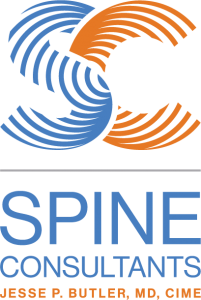The cervical spine comprises the first seven vertebrae and the discs between them. These discs can cause neck pain from degenerative disc disease or herniated discs.
Non-surgical treatments such as pain medication and physiotherapy can treat degenerative disc disease and herniated discs in the cervical spine. Besides nonsurgical options, anterior cervical discectomy and fusion (ACDF) may help relieve your pain.
What is ACDF?
The anterior cervical discectomy and fusion (ACDF) procedure involves removing a herniated or degenerative disc from the cervical region. Afterward, the surgeon fuses the vertebrae together. Anterior means that the disc is accessed from the front, not the back.
An anterior approach offers better access to the cervical spine than a posterior approach. The surgeon can access nearly the entire cervical spine by cutting through only one muscle.
Patients notice less discomfort because of this treatment since little manipulation and cutting are involved compared to a posterior procedure. Even though it can take several months before the bones fuse completely, reducing discomfort from the surgery with active recovery and a healthy lifestyle can help the patient recover quickly.
How ACDF Surgery Is Performed
ACDF surgery involves the following steps to make it as convenient as possible for the patient:
Anterior surgery
The spine surgeon cuts a one to two-inch-long horizontal incision is made on either the left or right side of the neck. If the case is more complex, the surgeon may decide on a vertical incision.
After splitting the thin muscle beneath the skin under the skin incision, they penetrate the plane between the sternocleidomastoid and strap muscles. A second plane is added between the trachea/esophagus and the carotid sheath. The layers of fibrous tissue are dissected to separate the disc space from the spine.
Disc removal
The spine surgeon uses fluoroscopy to get an x-ray image of the spine. This helps the surgeon determine where to operate so they can access the slipped or damaged disc. Once the right disc is identified, the surgeon cuts the fibrous ring around the disc. They then take out the inner core of the disc.
With an anterior cervical discectomy, the entire disc is removed. Also, the cartilage at the ends of the vertebrae is removed, which reveals the firm bone beneath.
Cervical Spine Canal Decompression
During surgery, the surgeon dissects the posterior longitudinal ligament, the ligament that connects the disc with the spinal cord. This allows the surgeon access to the spinal canal so they can remove the disc debris.
It is also not uncommon for the surgeon to remove a portion of the uncinate processes, which form the disc’s boundaries. To ease the pain caused by spinal cord compression or nerve root compression, the surgeon takes out osteophytes bone spurs from the body. A magnifying loupe or operating microscope lets the surgeon see the smaller anatomical structures during the dissection.
Cervical Fusion
Following the cervical discectomy, the surgeon inserts a bone graft, an implant, or a case into the disc space to prevent it from collapsing. This procedure promotes fusion, or the joining of two vertebrae into one. The spinal cord also has more room for nerve roots, which prevents kyphosis from occurring.
A small, thin plate is screwed into each of the vertebral bones and fastened to the front of the spine to keep it in place. This serves to offer additional stability across the disc area and aids in the healing process. Fusing the vertebral bones together lets the bones form in the space where the disc used to be, uniting the vertebral bones above and below into one solid whole.
Recovery from ACDF
Patients typically leave the hospital the same day or the next day after the ACDF. Most patients recover and resume most of their daily activities within 4 to 6 weeks. A full fusion can take anywhere from 12 to 18 months for the bones to form into one.
The surgeon should discuss any physical restrictions and rehabilitation options depending on the patient’s health and cervical spine health. Some patients experience chronic stiffness, whereas other patients may completely recover their full range of motion. It may also be necessary to refrain from extreme physical activity to prevent neck injuries.
After a follow-up appointment, the surgeon may recommend physical therapy to relieve discomfort and improve mobility. Several targeted exercises in physical therapy focus on strengthening and stabilizing the back. Patients learn to perform routine activities and physically demanding activities in a safe, healthy way from their physical therapists.
ACDF Surgery May Be Right For You
Most people with a herniated disc or degenerative disease can return to normal lives following ACDF surgery. The benefits of undergoing ACDF surgery should be carefully considered against other nonsurgical treatments. Ultimately, only a board certified spine surgeon can determine if this surgery will benefit you. Dr. Butler has decades of experience performing a wide range of cervical surgeries. If you believe surgery is your best option, we recommend scheduling an appointment to discuss your options.

